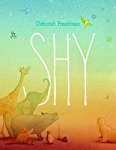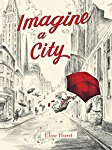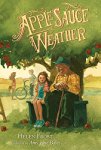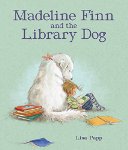For many of us, talking to people we do not know is a very hard thing to do. Even when we really want to make friends, taking that step to connect with someone new seems almost insurmountable, especially if it takes us out of comfort zone and forces us to go somewhere that we are not familiar with.
Today's picture book beautifully captures the journey that a character takes when he has to leave the place he knows, to seek out something that he desperately needs.
 Shy
Shy
Today's picture book beautifully captures the journey that a character takes when he has to leave the place he knows, to seek out something that he desperately needs.
 Shy
Shy
Deborah Freedman
Picture Book
For ages
Penguin Random House, 2016, 978-0-451-47496-4
Shy is happiest when he is “between the pages of a book,”
when he can go to “a land far away” and experience “once upon a time.” Shy
particularly loves books about birds, where he happily reads about their beauty
and their songs. The sad thing is that Shy has never heard real bird song
because the birds in books cannot sing.
Then one day a little
yellow bird flies by, a real bird that sings. Shy is delighted, and
overwhelmed. He would love to talk to the bird but has no idea how to do so.
What if he makes a mess of things, what if he makes a fool of himself, what if…
And then the
bird is gone.
Shy so wants to
follow the bird, but he has never left his safe little hiding place within the
pages of books. He has never ventured out into the world. Though he is afraid,
Shy leaves his home for the first time in his life and what he sees as he seeks
out the bird amazes him. There are all kinds of animals, and there are birds,
lots of birds. Shy hears the song of his bird and follows, and then comes that
moment when he needs to speak, to connect with the bird, but Shy cannot get the
words out and then…
The bird is gone
again and Shy is alone once more.
Many of us find
it very hard to venture away from the places that make us feel safe, the places
that we are used to. If we are lucky, something comes along that pulls us out
of our safe areas, and we enter a world full of marvels and possibilities, the
most precious of these being friendships and connections with others. This
remarkable picture book explores the journey a very shy character makes when
something from the outside world touches him so such a degree that he has to
follow; he has to leave the safety of his book for the sake of something wonderful.




